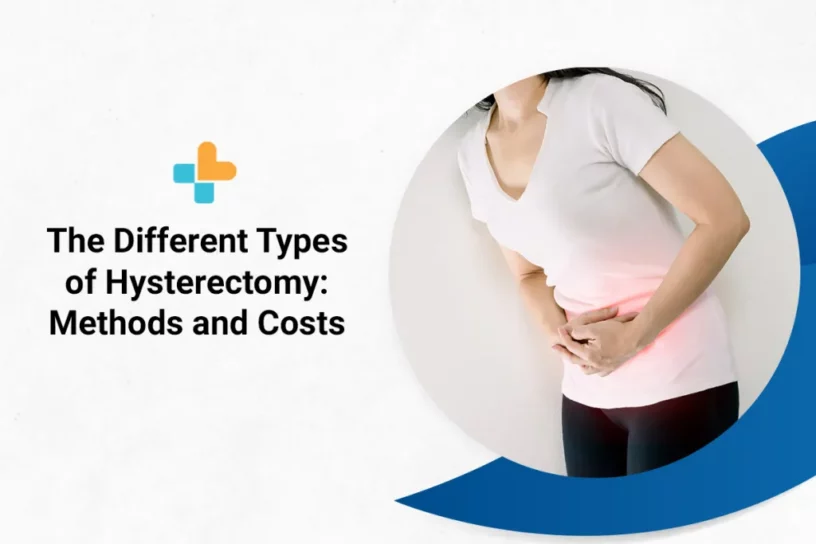Why a hysterectomy is done; The different types of hysterectomy; and the cost of hysterectomy. Keep reading to know more!
The term hysterectomy evokes different emotions in different people. The feelings of confusion and fear are completely understandable as hysterectomy is an umbrella term used to refer to the treatment of cancer as well as extreme menstrual cramps.
Regardless of why one is advised to get a hysterectomy, it is essential to know the details about what hysterectomy means, what is included in the hysterectomy treatment and why it is needed before one makes any decisions.
If your doctor has advised you to have a hysterectomy, they have undoubtedly explained everything you need to know about the procedure and how it is performed. But, in the unlikely event that they haven’t, or if you still have concerns about the procedure, this blog is for you.
The first thing on the mind of a patient who has been recommended this treatment plan is “what is a hysterectomy?”
So let’s start there.
What is a hysterectomy?
The phrase hysterectomy refers to the surgical removal of the uterus, commonly known as the womb. Other reproductive structures may also be removed, depending on the diagnosis, to properly treat a specific condition. The operation can also include the removal of the cervix, fallopian tubes, and ovaries in addition to the uterus.
It can be further classified into four categories depending on the parts that are removed along with the uterus ?
- Total hysterectomy: Although it might sound like the complete removal of the reproductive system, it is not. It refers to the removal of the uterus and cervix.
- A supracervical hysterectomy: Refers to the removal of the pear-shaped uterus while leaving the cervix. It is usually performed for pelvic-area diseases that aren’t cancerous.
- Total hysterectomy with bilateral salpingo-oophorectomy: Here, the uterus, cervix, fallopian tubes (salpingectomy), and ovaries (oophorectomy)are all removed.
- Radical hysterectomy with bilateral salpingo-oophorectomy: The uterus, cervix, fallopian tubes, ovaries, the upper portion of the vaginal canal, and some surrounding tissue and lymph nodes are all removed. This sort of procedure is performed when cancer cells are found in the uterus.
Your doctor will discuss which type of hysterectomy is needed depending on your condition and diagnosis.
When is a hysterectomy recommended?
Hysterectomy benefits are manifold. Some of the common reasons why one is recommended to get a hysterectomy are as stated ?
- Painful, heavy or frequent periods which shows no signs of improvement with medical treatments
- Uterine fibroids that cause pain, bleeding, and/or other problems
- Changes in the vagina, cervix, uterus, fallopian tubes, or ovaries that are cancerous or precancerous
- Pelvic infection that is severe, recurring, or untreatable
- Endometriosis, a condition in which the uterine tissue attaches and grows in the wrong place, causing pain
How is a hysterectomy done?
Your doctor will decide the best surgical method after identifying the type of hysterectomy you will require based on your diagnosis. There are several surgical approaches your surgeon can use to perform a hysterectomy. Some of them include
Vaginal hysterectomy: The uterus is removed through the vaginal canal during a vaginal hysterectomy. The uterus is detached from the ovaries, fallopian tubes, and upper vagina and is removed through an incision at the top of your vagina.
Laparoscopic hysterectomy: A laparoscopic hysterectomy is a surgical technique that removes the uterus in a minimally invasive manner. A tiny camera is inserted through a small incision in the belly button and the surgical instruments are inserted through a series of additional tiny incisions. Once the surgical procedure is completed, the uterus can be removed in little pieces through incisions in the belly or through the vaginal canal.
Robotic-assisted laparoscopic hysterectomy: This procedure is similar to the laparoscopic method. The only difference is that in this method the surgeon performs the procedure with the help of a robotic machine.
Abdominal hysterectomy: It is most commonly referred to as ‘hysterectomy open surgery’. Here, the uterus is removed through a six to eight-inch long incision in your abdomen. This method is used when there is a malignancy involved, when the uterus is enlarged or when the disease has spread to the other pelvic areas.
The hysterectomy surgery time could be anywhere between an hour or three depending on the type of surgery and the size of the uterus.
The best hospital in Bangalore for a hysterectomy is one that is staffed with experienced professionals and state-of-the-art equipment. Ayu Health, in Bangalore, is one such NABH accredited hospital that offers the best of doctors, technology and care for all their patients. If you’d like to talk to one of our gynaecologists, visit our website to book an appointment or call us at +91 – 6366 100 800. We’re here for you!
Read more: The Different Types of Hysterectomy: Methods and Costs
Our Hospital Locations
Gynaecology Surgery Hospitals in Chandigarh | Gynaecology Surgery Hospitals in Bangalore | Gynaecology Surgery Hospitals in Jaipur | Gynaecology Surgery Hospitals in NCR | Gynaecology Surgery Hospitals in Hyderabad
Our Doctors
Gynaecology Surgery Doctors in Chandigarh | Gynaecology Surgery Doctors in Bangalore | Gynaecology Surgery Doctors in Jaipur | Gynaecology Surgery Doctors in NCR | Gynaecology Surgery Doctors in Hyderabad
About the Author

Dr. Nikitha Murthy B.S.
Dr. Nikitha Murthy B.S. is a renowned Gynaecologist currently practicing at Ayu Health, Bangalore.
He is s a Consultant with IVF Access at its Rajajinagar clinic. She has over 6 years of experience. Dr. Nikitha has a post-graduation (MS) in Gynaecology, DNB from the National Board of India, and a Fellowship in Reproductive Medicine. He also has vast experience in Post-Graduation (MS) in Gynaecology and DNB.




